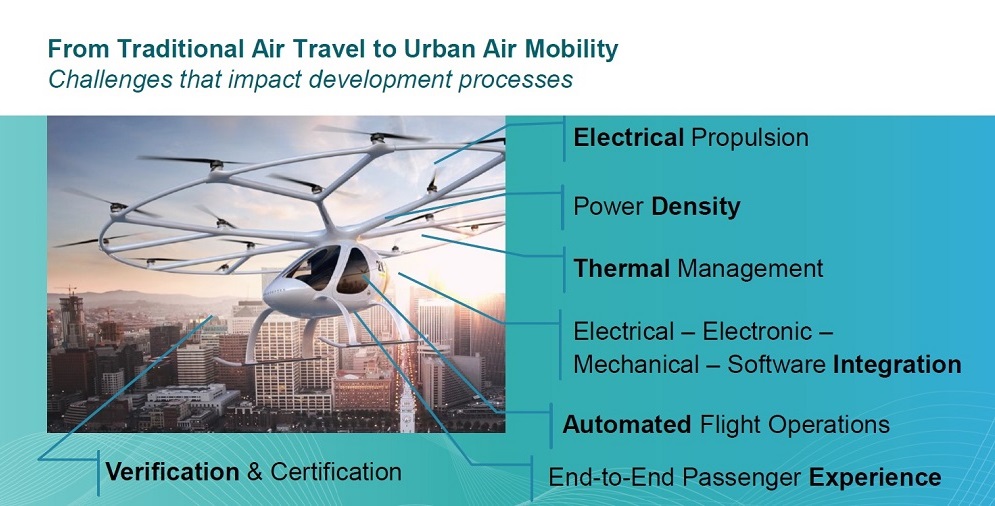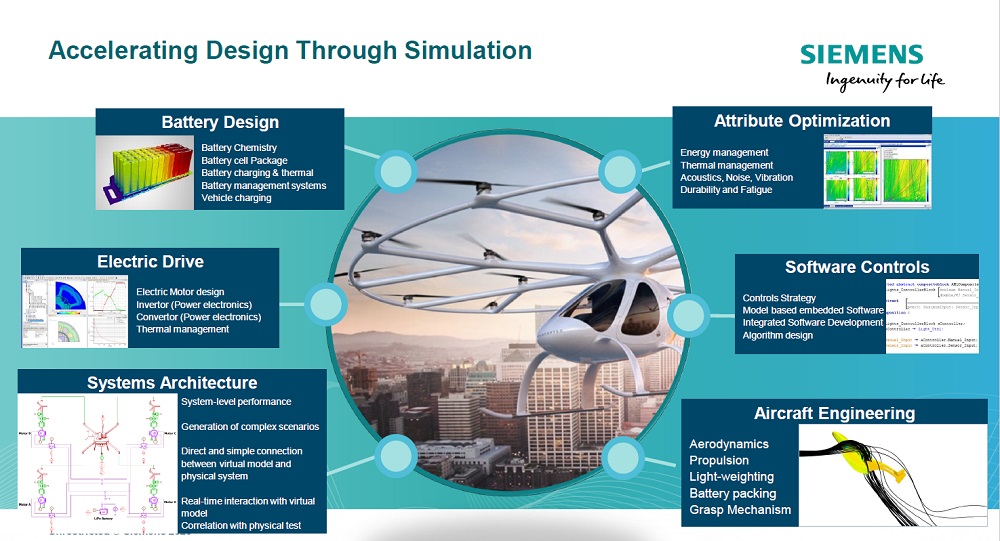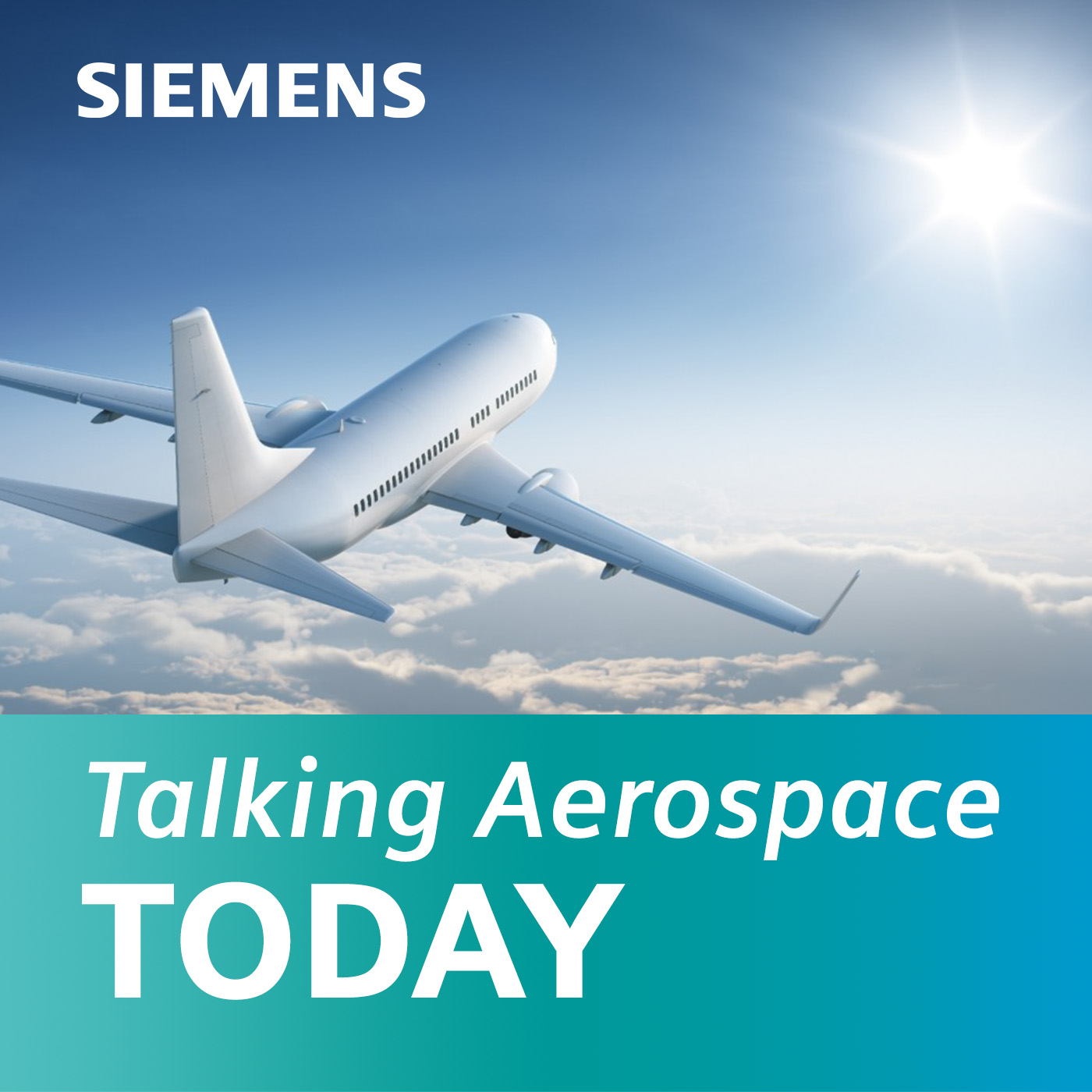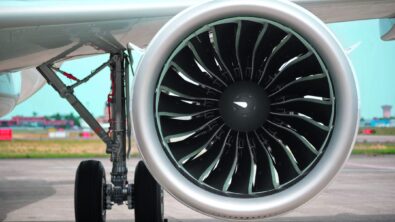Building the future of Aerospace Part I

Aerospace and defense is traditionally a capital-intensive industry and not suitable for start-ups. Yet, there were more than 6,000 aerospace and defense startups as of December 2019!
Driving this trend and allowing start-ups to flourish is a combination of digitalization and new modes of transport and services, such as urban air mobility and drones.
We are living in one of the most dynamic periods of innovation where the world is going to see disruptive advances in technology and mobility, which will include everything from air taxis to electric propulsion, to even hypersonic and supersonic aircraft. And we’re at the dawn of a new era in space exploration with private companies actively leading the way.
In my 30+ years in the industry, I have not seen anything like this. And we’re just getting started.
“To survive disruption and thrive in the digital era, incumbents need to become digital enterprises, rethinking every element of their business” – 2016 World Economic Forum
What are the trends and technologies that are changing our industry?
- Increased program complexity and integration: As products become more integrated and dominated by software and electrical solutions, they’re increasing in complexity. Yesterday’s tools and approaches cannot be used to build tomorrow’s products.
- Globalization. From suppliers to workers to competition, the world is more global than ever. It’s important to communicate effectively and invest in the new tools that can build a model-based enterprise.
- Electrification and electric propulsion. New tools and methods are necessary to design and build these aircraft. There are more challenges with electrical systems and software as well as within the regulatory environment as improvements are made for these systems.
- Rapid development cycles. Competitive companies must bring complex new products to market faster than ever while meeting technical cost and schedule.
- New materials and manufacturing methods. The way parts and products are designed and produced are changing. Customization, factory functionality, automation and additive manufacturing will alter the creation of products.
We believe that for businesses to survive and thrive in this era of innovation they must embrace digitalization. Check out the video below and see some incredible ideas regarding the future of aviation and how engineers are using digitalization to meet the challenges mentioned above.
Engaging in digitalization helps build the future Aerospace and Defense and brings customers’ visions of tomorrow into reality.
To stay competitive and profitable during these times of innovation, companies must change the way products are designed, engineered and built. For more than ten years Siemens has been at the forefront of helping our customers meet these challenges and transform their organization into a fully functional digital enterprise. We combine our efforts under a holistic portfolio offering called Xcelerator, ranging from electrical and mechanical design, simulation, operations management, product lifecycle management, data analytics and much more.
Allow me to explain.
Digital threads and digital twins
Digital threads enable processes and integrate data from the beginning of the product lifecycle until delivery and operation of the aircraft. The digital thread in the aerospace industry allows for tracing requirements from design to manufacturing, as well as providing the necessary knowledge throughout the production lifecycle across all disciplines.
This includes:
- Model-based engineering
- Integrated program planning and execution
- Product design and optimization
- Verification management
- Supply chain collaboration
- Intelligent manufacturing
- Product support
On top of that, Siemens provides tools to create a comprehensive digital twin, a virtual representation of a physical product or process, used to understand and predict the physical counterpart’s performance characteristics. The digital twin is about much more than managing 3-D CAD data – they are used throughout the product lifecycle to simulate, predict and optimize the product and production system to minimize the investment in physical prototypes and assets. By demonstrating the impact of design changes, usage scenarios, environmental conditions and countless other variables, implementing the digital twin drives down costs, reduces development time and improves the quality of the final product or process.
Let’s take a look at air mobility where everything interacts simultaneously in real time. Engineering teams face challenges that require multi-domain solutions, thus focusing on one area might sacrifice other areas, safety or compliance. Simulating multiple platforms cohesively in the digital twin provides data on how all the attributes and domains perform as an interconnected structure. Some of the more critical attributes are depicted in Figure 1.

The comprehensive digital twin not only optimizes solutions to multi-domain or multi-physical problems but accelerates the design process through simulation. The benefit of the digital twin is its ability to create a real virtual integrated aircraft. A collection of simulation models (Figure 2) enables matching of the characterizations of the aircraft in the digital world and potential issues are identified before finishing the final design. With more valuable data during testing, engineers can focus on the areas of greatest need and spend the time saved exploring more innovative options. Simulation can then validate and verify before they build prototypes and conduct costly, real-world tests.
With this type of example, can you see how the digital twin can solve a variety of issues early in the design process?

The digital twin and digital thread offer significant benefits when designing an aircraft, its components or systems.
For more information, I urge you to check out this on-demand webinar, “Preparing for the Future of Aerospace and Defense.” Some of the topics I covered in this blog are discussed in greater detail in this webinar.
And please take a listen to our just-released podcast that goes into greater detail on the future of aerospace. I am truly excited to share this with you!
This concludes part 1 in my blog series. In part 2, I discuss how the digital twin goes beyond just product design and can be used to enhance the production and performance of the product.

Talking Aerospace Today Podcast
The A&D Industry is at a serious inflection point. Transformation to the digital enterprise has opened up a new era in innovation and technological breakthroughs. However, complexity and compliance continue to hamper the best of efforts.
Join us as we explore how Siemens is turning complexity into a competitive advantage for many of our customers – today and well into tomorrow.


